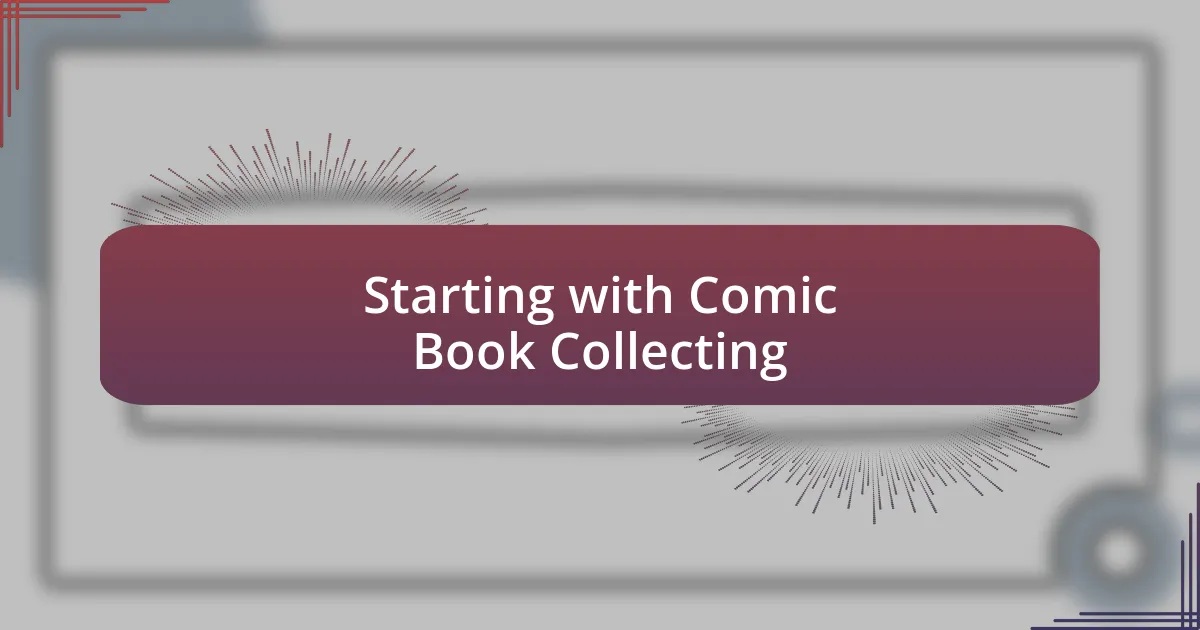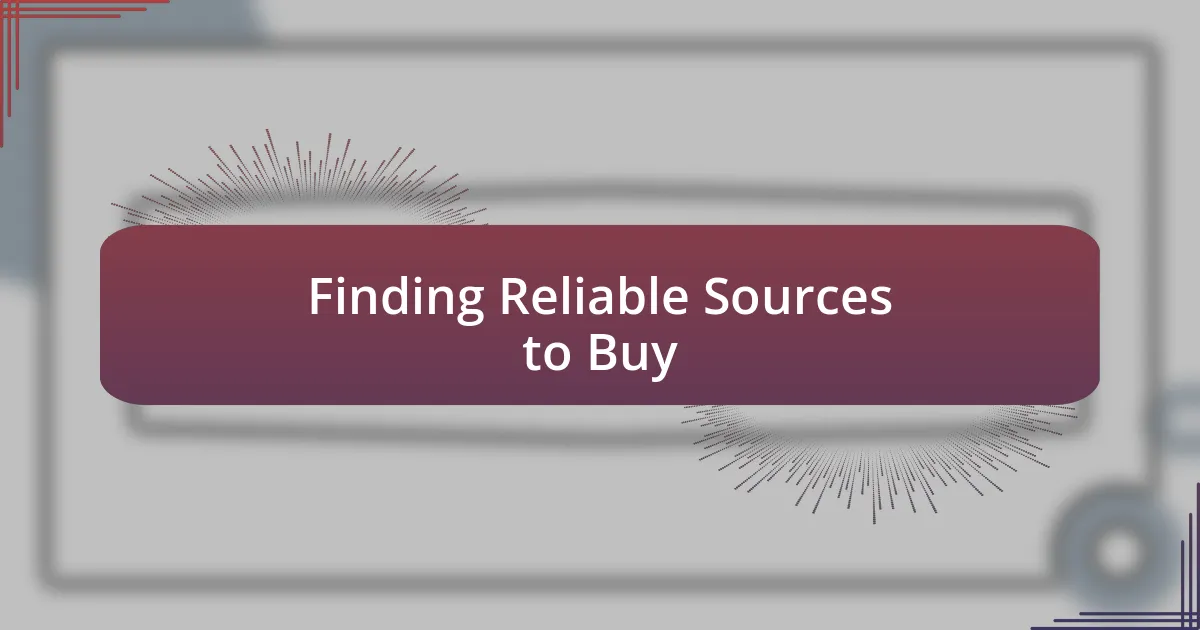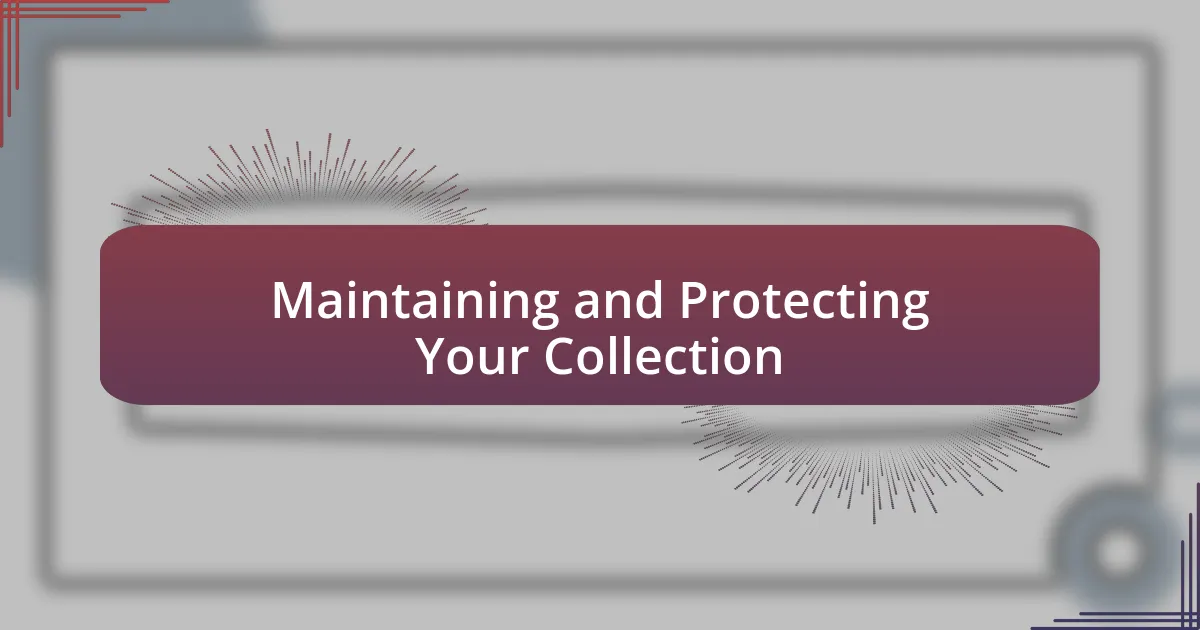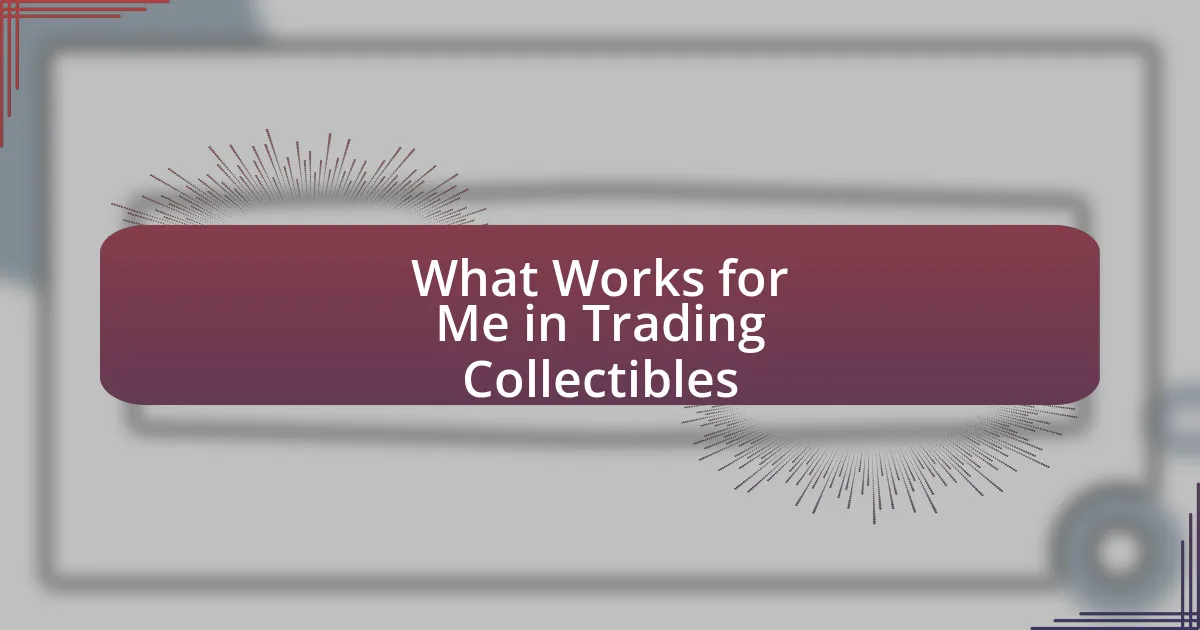Key takeaways:
- Setting a focus, like a specific genre, can enhance the comic book collecting experience.
- Understanding comic book grading significantly impacts a comic’s value and appreciation.
- Creating a budget and starting small helps in building a personal and meaningful collection.
- Maintaining climate control and handling comics with care are crucial for preserving their condition.

Starting with Comic Book Collecting
When I first dipped my toes into comic book collecting, I was both excited and overwhelmed. The sheer variety of characters and stories was staggering. I still remember wandering into my local comic shop, unsure where to start, and feeling like a kid in a candy store – what an exhilarating sensation!
As I began my journey, I realized that setting a focus could steer my collection in a meaningful direction. I decided to concentrate on a specific genre—superheroes, in my case. Have you ever felt lost among so many choices? That’s precisely how I felt until I pinpointed what resonated with me the most, transforming my collecting experience from chaos to joy.
Over time, I learned the importance of connecting with fellow collectors and joining online forums. Sharing my passion with others not only enhanced my understanding but also ignited deep conversations about characters and story arcs that I loved. There’s something special about exchanging thoughts with someone who gets the thrill of finding a rare issue or discussing the nuances of a beloved hero’s journey. Isn’t that what makes collecting so rewarding?

Understanding Comic Book Grading
Understanding comic book grading is a crucial aspect of collecting that I wish I had grasped earlier. The grade of a comic book can significantly impact its value, so understanding the grading scale is vital. I remember my first attempt to sell a comic I thought was in pristine condition, only to discover it was graded much lower than I had anticipated. That humbling experience taught me that each little flaw—a bent corner, a dented spine—could make a big difference in a comic’s grade and value.
Here’s a quick overview of the grading scale:
- 10.0: Gem Mint – Perfect in every way.
- 9.0-9.9: Near Mint – Few signs of wear, easily the best-conditioned copy.
- 8.0-8.9: Very Fine – Minor imperfections are visible.
- 6.0-7.9: Fine – Moderate wear, but still a solid copy.
- 4.0-5.9: Good – Noticeable wear, but still readable.
- 1.0-3.9: Poor – Major defects; comic may not be suitable for most collections.
I learned that grading involves assessing factors like surface wear, creases, and the condition of pages. The importance of professional grading services also struck me; I sent in a few comics I wasn’t sure about for grading and was thrilled with the feedback and added value it provided to my collection. Understanding grading turned my collecting journey into a more informed and rewarding experience, allowing me to appreciate the nuances of condition and quality.

Building Your Initial Collection
Building Your Initial Collection can feel overwhelming at first, but it’s a rewarding journey. My advice is to start small; I remember my thrill when I stumbled upon a local comic shop that offered a box of vintage comics for a great price. Picking out issues that sparked joy for me rather than just chasing hot collectibles was essential in creating a collection that truly felt like mine.
When curating those first comics, consider what’s core to your interests. Are you drawn to classic superheroes, indie comics, or graphic novels? I found that a little research goes a long way in identifying key issues or series that hold personal significance. For instance, I still cherish the first few issues of a series that introduced me to a universe I fell in love with. This not only brings a sense of nostalgia but also establishes a foundation for growth in your collection.
In terms of budget, it helps to create a plan. I learned to allocate funds each month specifically for comic book purchases. Overspending on one rare issue can lead to regret if it prevents you from acquiring other gems later. Here’s a simple comparison that illustrates different approaches to building your initial collection:
| Collection Approach | Advantages |
|---|---|
| Focus on favorite genres | Creates a personal connection and enjoyment |
| Buy sets or series | Continuity and character development enhances understanding of the story |
| Seek out local comic shops | Support community and often find unique items |
| Attend comic conventions | Access to a wider range of comics and networking with fellow collectors |

Finding Reliable Sources to Buy
Finding reliable sources when buying comics is crucial for any collector, and my own experiences have taught me where to look. I often find joy in exploring local comic book shops; the owners usually have great insights and a passion for the medium. Just last month, I came across a hidden gem in a small town, where the owner willingly shared stories about the rare issues he had collected over the years. This connection made my purchases feel more meaningful.
Online marketplaces can be a bit trickier, but there are certainly platforms I trust. For instance, sites like eBay can yield fantastic finds if you take the time to read seller reviews and check ratings. I remember discovering a rare variant cover that had eluded me for years, and it felt exhilarating navigating through feedback to ensure I was making a safe purchase. By choosing sellers with a solid reputation, I’ve built a level of confidence that makes the hunt enjoyable.
Another great source is online comic book forums and social media groups. I often engage with fellow collectors who share valuable recommendations and experiences about purchasing comics. Just the other day, a member shared a lead on a local convention that was going to host a buy-sell-trade event. With such opportunities not just for buying but also for networking, I find it incredibly rewarding to engage with others who share my passion. Have you ever attended a gathering like that? It can be a fantastic way to make connections while expanding your collection.

Organizing and Displaying Your Comics
When it comes to organizing my comics, I find there are a few systems that work well. I typically categorize them by publisher, genre, or even storyline arcs, depending on how I feel inspired in the moment. The thrill of finding that one comic among my collection because it’s so well-organized is immensely satisfying. Have you ever experienced that rush when you finally locate an issue you’ve been looking for?
For displaying my comics, I prefer clear plastic bags with backing boards to keep them both visible and protected. Recently, I set up a dedicated shelf in my living room, and it feels like I’m showcasing not just the comics, but the stories and the memories behind each one. I love how certain pieces spark conversations with guests. The moment someone picks up a comic and asks about its story, it’s an opportunity to share my passion while reliving fond memories of my collecting journey.
I also enjoy creating themed displays, like a section for my favorite superheroes or iconic storylines. A few months ago, I built a little corner where I arranged them alongside related memorabilia, such as action figures and prints. It turned my space into a vibrant tribute to the characters that shaped my childhood. How about you? Have you ever thought about turning your comic collection into a focal point for others to admire?

Maintaining and Protecting Your Collection
To maintain and protect my comic collection, I always prioritize climate control. I’ve learned the hard way that humidity and temperature fluctuations can lead to discoloration and mildew. Do you ever worry about the condition of your comics when the seasons change? I often find myself checking my storage space to ensure it’s not too hot or damp—investing in a dehumidifier has made a noticeable difference in preserving the vibrancy of my collection.
Handling my comics with care is something I can’t stress enough. I use cotton gloves when flipping through older, delicate issues to avoid oils from my fingertips causing damage. This practice might seem excessive, but I remember the dread of noticing a smudge on a prized collectible. Have you ever felt that heart-stopping moment when you realize you’ve accidentally harmed something you cherish? Such moments have reinforced my commitment to being meticulous and protective.
Lastly, I’ve established a routine for regularly inspecting my comics, which has become almost ritualistic for me. Every few months, I pull each comic from its storage and check for any signs of wear or potential issues. It’s also a chance to reconnect with stories that initially sparked my interest. When was the last time you took a deep dive into your collection? This proactive approach not only safeguards my comics but also reignites my passion for them every time I revisit those cherished tales.




